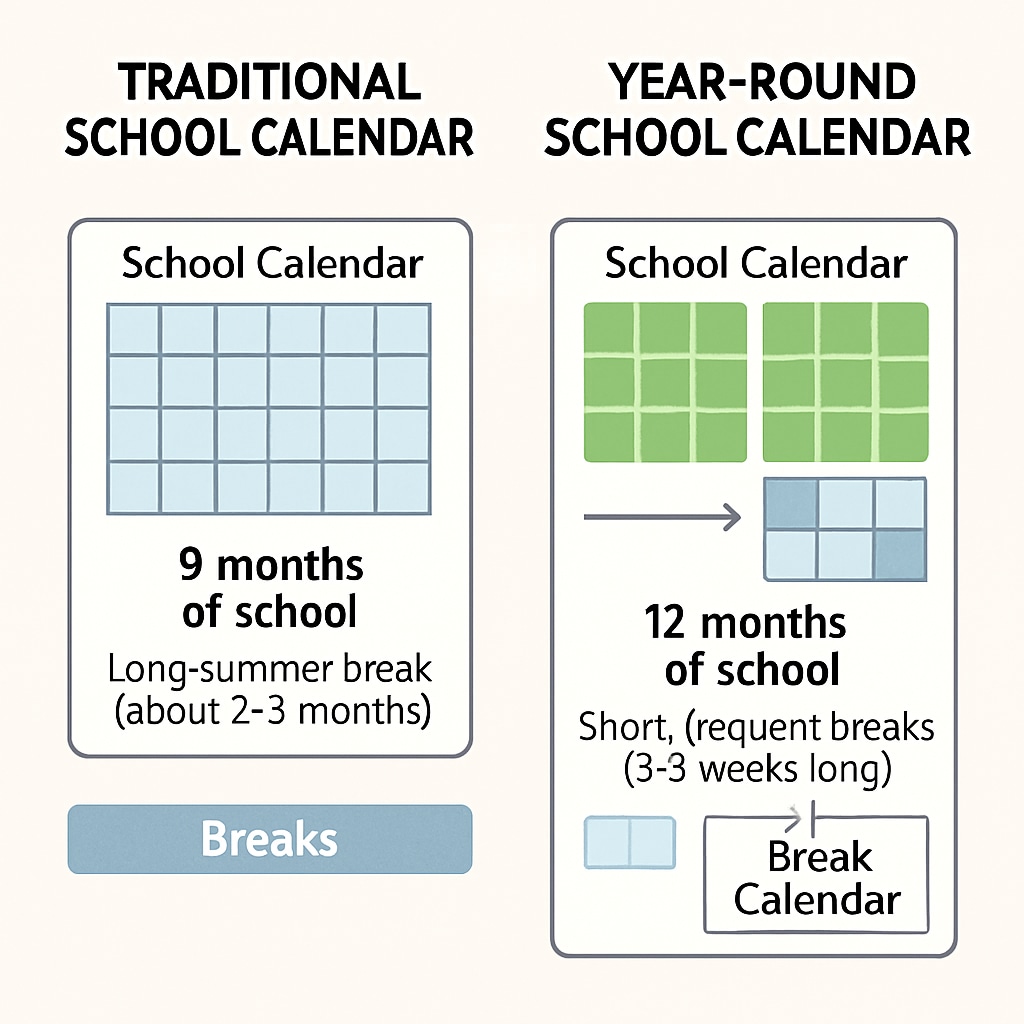Year-round schooling, a revolutionary approach to education, offers a compelling solution to the challenges posed by traditional long summer breaks. By replacing the extended vacation with shorter, evenly distributed breaks, this system minimizes “summer learning loss”—a phenomenon that significantly impacts students’ ability to retain knowledge. As a result, this innovative model fosters better knowledge retention, creating a more balanced and effective learning experience for K-12 students.

The Challenges of Traditional Summer Breaks
The traditional schooling system, with its long summer vacation, has been criticized for the negative impact it has on student learning. Research shows that students often forget a substantial amount of information during the summer break, particularly in subjects like mathematics and reading. This “summer learning loss” disproportionately affects students from lower-income families, who may lack access to educational resources during the break.
Moreover, teachers often spend the first weeks of the new school year re-teaching material from the previous year. This cycle not only wastes valuable classroom time but also hampers the overall learning progress. Year-round schooling addresses these problems by maintaining consistent engagement with academic content, ensuring students retain more of what they learn.
How Year-Round Schooling Works
Year-round schooling modifies the traditional academic calendar by breaking the school year into shorter cycles. For example, students might attend school for nine weeks, followed by a three-week break. This balanced distribution of learning and rest eliminates the need for a long summer break, which is the primary cause of knowledge decay.
Key benefits of this model include:
- Improved knowledge retention due to shorter breaks between learning periods.
- A balanced schedule that reduces student burnout and stress.
- Opportunities for regular academic intervention during breaks, such as tutoring or enrichment programs.

Addressing Common Concerns
Despite its benefits, year-round schooling has faced criticism regarding logistical challenges, such as aligning family schedules and extracurricular activities. However, many schools implementing this model have adapted successfully by offering flexible programs and engaging parents in decision-making processes. Additionally, studies have shown that students in year-round schools perform as well or better academically compared to their peers in traditional schools.
For example, according to Britannica, schools utilizing year-round calendars report higher levels of student satisfaction and reduced absenteeism. This is primarily attributed to the shorter breaks, which help maintain students’ focus and motivation throughout the year.
The Future of Education
As educational institutions continue to evolve, year-round schooling represents a promising step toward modernizing the learning experience. By addressing the issue of summer learning loss and promoting consistent engagement, this model supports students in achieving their full academic potential. Furthermore, it aligns with a growing societal emphasis on lifelong learning and adaptability.
Adopting year-round schooling on a larger scale could pave the way for a more equitable and effective educational system, ultimately benefiting students, teachers, and families alike. For more insights into the impact of year-round schooling, visit the Wikipedia page on year-round school.
Readability guidance: This article uses concise paragraphs, clear headings, and lists to summarize key points. Transitions like “however,” “for example,” and “as a result” ensure smooth readability. Passive voice is kept minimal, and sentence length remains manageable for a broad audience.


